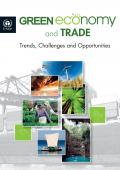In the full recognition of the seriousness of climate change problems, Korea announced a new policy towards greening its economy. In his address marking the 60th anniversary of Korea’s foundation in 2008, President Lee Myung-bak declared ‘Low Carbon Green Growth’ as the country’s new vision to lead the country’s development for the next decades. In 2009, the government announced the ‘National Strategy for Green Growth’ up to 2050, to be gradually implemented through five-year plans.
The national strategy envisages three main objectives: (1) mitigation of climate change and the strengthening of the country’s energy independence, (2) creation of new growth engines, and (3) improvement of the quality of people’s lives and enhancement of Korea’s international status. These goals are pursued by 10 designated policy directions, such as mitigation of greenhouse gas emissions, development of green technologies, creation of a green homeland and others.
The market for environmental services is substantial and growing. This policy brief argues that if well managed, liberalisation of trade in environmental services can provide substantial benefits to the private sector as well as the general public.
The paper clarifies that this would be achieved through enhanced market opportunities, improved health and environmental sustainability, particularly in developing countries.
Findings encompass:
Export restrictions are implemented nowadays with the aim of achieving a number of goals, such as food security, industrial development, environmental protection and natural resource conservation. Nevertheless, the current paper brings about a rethinking of the needs and policy objectives behind such measures.
The document presents the following findings:
- in most cases, export restrictions are implemented as one element of a larger resource management strategy
- most restrictions have been imposed by LDCs and developing countries, which account for a high proportion of natural resources produced worldwide
- rules under the WTO governing the use of export restrictions are less developed than those on the import side
- in some cases, export restrictions have served a role in reducing incentives to produce, and have sometimes exacerbated price spikes and volatility on the global markets that they sought to respond to
The authors indicate that countries may wish in the future to multilaterally negotiate better-adapted disciplines and policies, yet they underline these considerations:
This new report reveals, for the first time, data on resource use and resource efficiency for all countries of the world over three decades, from 1980 – 2008. The data covers the global, continental and country level, featuring illustrative case studies. The report evaluates the performances of different countries, highlighting the critical issues of current trends in resource use.
The report addresses three main issues:
1. Patterns of material extraction, trade, consumption and resource productivity in different world regions and countries;
2. Connections between material use and indicators of economic and social development;
3. Links between material use and selected major environmental problems, such as carbon emissions, land use change and water use.

